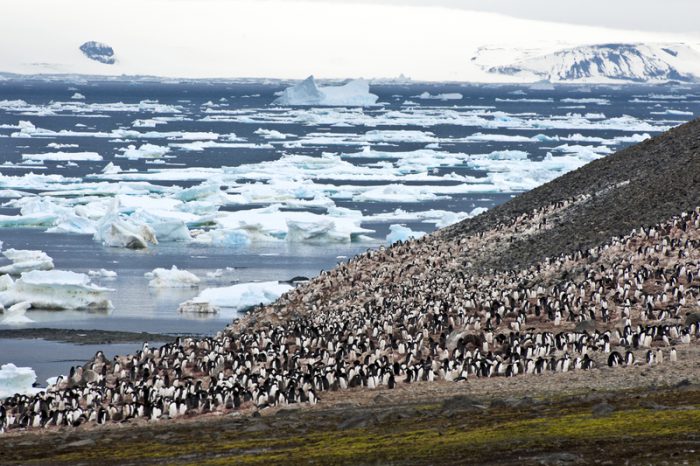Are you good at guessing the size of a crowd? It's trickier than you might think, and that's if everyone is standing still and in plain view. So you can understand how much more difficult it is when you dealing with trying to estimate the population of live animals in an area. Especially with all of the migration, hunting, swimming, flying, bounding, and leaping that live animals tend to do!
That's why we're happy to give experts the benefit of the doubt when they suddenly come back and say something like, "Remember how we said that there were 2.3 million Adèlie penguins in Antarctica? Well, okay, turns out we missed a few... ummm... there's actually 5.9 million. Our bad!"
This is exactly what just happened, as researchers at the University of Adelaide in Australia released a brand-new study last week. The news more than doubled the estimated global population of these adorable mid-sized, tuxedo-ed ice water swimmers. (Adèlies are only found in and around Antarctica.)
How can you miss 'em?
That did cross our mind, too. After all, not accounting for nearly four million birds (and over half the population) seems a bit... odd. But a lot of it comes down to the difficulty of tracking animals who are often on the move, not to mention underwater.
Basically, there are two sorts of Adèlie penguins. There are those who are breeding (or raising a new family), and non-breeding ones.
Breeding pairs have been the focus of past estimates. They live on land because they are nesting, which makes them simpler to track.
Non-breeding birds, on the other hand, spend their time swimming in the water and fishing. Enjoying the penguin good life, basically.
Healthy and happy... for now
This new study was the first to use a variety of new camera and data collecting technique to try and capture the entire population of these penguins in Antarctica. The results suggest that Adèlies are healthier than we ever believed. This is wonderful news, especially when one considers how many species are struggling with low numbers. Adèlies feed on hundreds of thousands of tons of krill and fish each year. Their abundant numbers mean that, at least in Antarctica, the oceans remain full of food.
However, scientists do caution that the penguins may have some big challenges in the future. Climate change is affecting Antarctica dramatically, melting its ice at a rapid pace. Some scientists think this may help the penguins, as the melting ice will expose newer feeding areas previously trapped under ice. But it also means that these numerous birds may need to move further in land to nest... which would bring them closer to humans and their research stations. Some scientists are worried that this might interfere with their everyday—and human-free—life.
 An Adèlie penguin colony in Antarctica. The birds are doing better than ever believed. (© Hel080808 | Dreamstime.com)
An Adèlie penguin colony in Antarctica. The birds are doing better than ever believed. (© Hel080808 | Dreamstime.com)










That was awesome ?